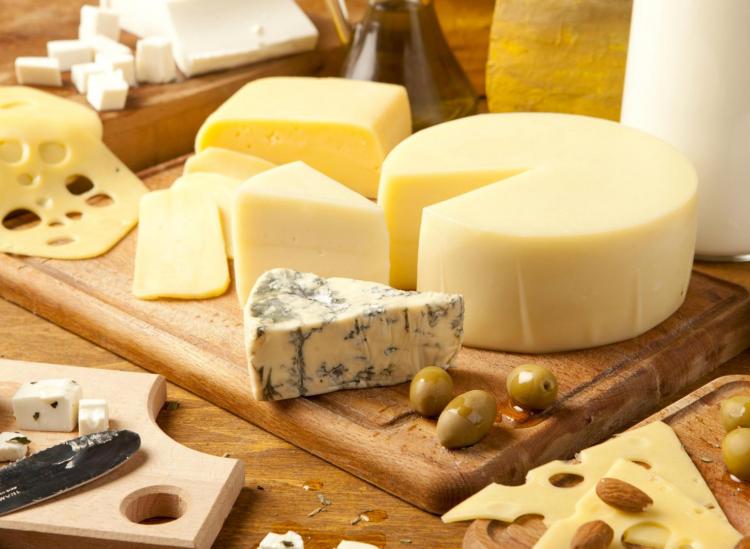Lactose Intolerant? Here’s How To Indulge Your Love Of Dairy

Michael Stern/Flickr
Just because you’re lactose intolerant, doesn’t mean you need to flat out avoid all dairy. There’s actually a huge difference between being lactose intolerant and having a milk allergy. Casein is the allergen responsible for all sorts of milk-related health issues while intolerance just means your body can’t digest lactose, the main sugar in milk, properly. Full-fat yogurt, goat products and aged cheeses are your holy grail if you’re lactose intolerant. Below, a list of what’s fair game.
Yogurt
Yogurt is a loophole food that people with a lactose intolerance can usually handle pretty well. You should be on the lookout for yogurts with live active cultures or probiotics. These ingredients are considered the “good bacteria” and they feed on sugar, so they end up consuming most of the lactose anyway. Greek yogurt and full-fat yogurt are the best for this scenario.
Kefir
There’s a yogurt-like drink that could help incorporate dairy back into your diet if you’re lactose intolerant. Kefir, which can be made from cow, sheep, or goat milk, has been around for centuries. It’s a slightly more expensive alternative to milk and well known for its health promoting qualities. Just like yogurt, kefir is made from fermented milk with a lot of the “good bacteria.” It also goes a step beyond yogurt with a slightly more tart and tangy flavor, plus a wider range of nutrients.
Goat Products
In the United States, we often look to cow’s milk as a dairy source for calcium that’ll give us strong bones and other vitamins. However, in the rest of the world goat’s milk is the preferred source of nutrients. The fat molecules in goat’s milk are shorter, which make it easier to digest than the larger molecules in cow’s milk. Goat milk also has a different protein structure with less of the Alpha S1 Casein protein that’s usually linked to allergies.
Recently, goat products have become more mainstream in grocery stores. You can now buy full-sized containers of goat milk from companies like Meyenberg. Goat milk ice cream, like LaLoo’s, is an ideal alternative for people sensitive to cow milk ice cream. Goat cheese is a creamy spreadable cheese with a tangy, strong flavor, that goes well with vegetables and just about anything else you can dream up. Aged goat cheeses are the safest bet if you’re lactose intolerant. Give Murray’s aged goat gouda a shot or go for some aged goat milk cheddar.
Aged Cheeses
Everyone’s bodies are different and while some people can tolerate more digestible forms of dairy, there are a lot of people whose stomachs just can’t handle dairy at all. Check out these amazing vegan cheeses if you’re in this boat. If you’re on the fence and still think your body is capable of handling certain cheeses, you should start reading nutritional labels for helpful information. The best way to check for lactose in cheese is to assess the amount of sugar, the fewer grams the better. If the sugar is listed as zero, there’s a good chance the cheese contains no more than half a gram of lactose per ounce. Compared to the amount of lactose in milk and softer dairy products, this is pretty good.
So live on the wild side and peruse through the cheese section next time you’re at the store. Keep an eye out for older cheeses since they lose their lactose as they age. If it’s aged longer than one year, there should be no lactose present at all. Cheeses with under five grams of sugar are also an option. Luckily, some of the best Italian cheeses like Parmigiano Reggiano, hard Italian sheep cheeses and aged goudas all fall into this category.
It looks like the lactose intolerant life might be better than you thought. Although, please don’t accidentally kill yourself in the process of experimenting. Now go explore!











